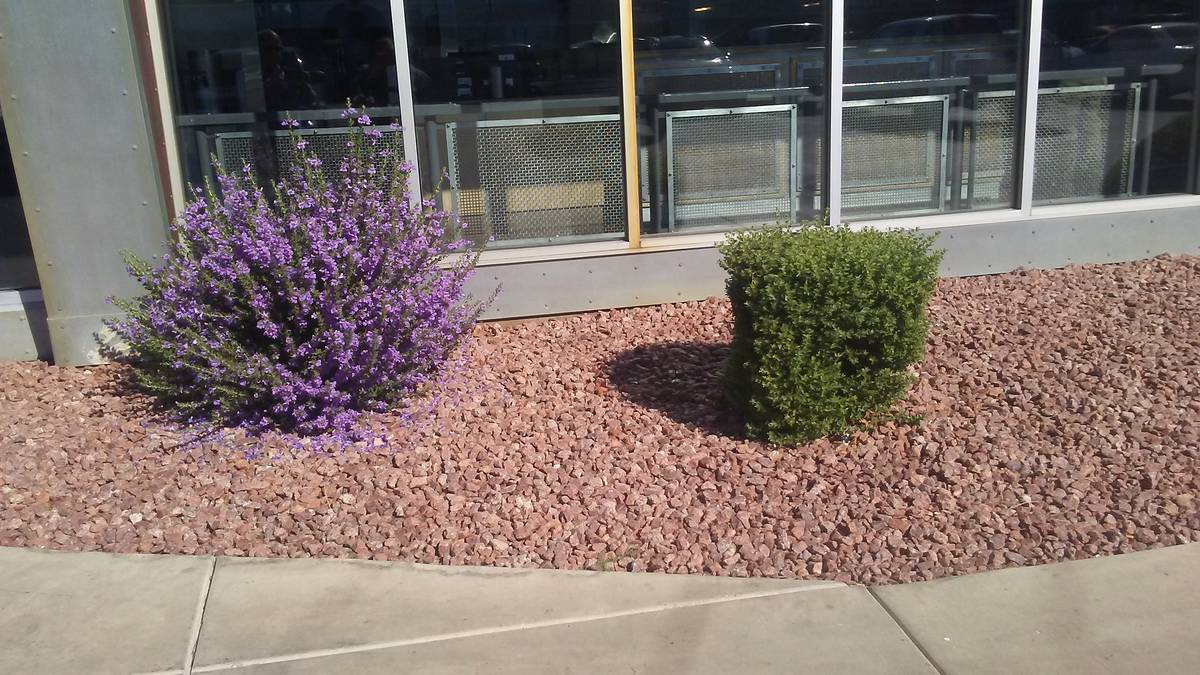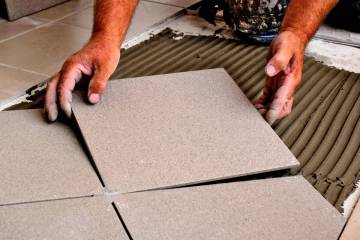Prune ornamental shrub to its natural form
When an ornamental shrub is pruned, the end result shouldn’t be obvious. The end result, just like a good haircut, should be a plant growing in its natural form. Pruning plants this way is a lot less work and done much less often.
Exceptions to this are specialized types of pruning such as creating hedges, but creating landscape “gumballs” by pruning should not be included. Unfortunately, pruning shrubs to gumballs is commonplace now.
Two techniques that should be used for pruning shrubs are rejuvenation pruning and renewal pruning.
Rejuvenation pruning removes the entire woody plant to a few inches from the ground. Typically, this is done just before new growth starts in the spring.
Pruning cuts might be 1 inch above the soil for small shrubs like lantana and bougainvillea and 4 to 6 inches above the soil for larger shrubs like oleander. Reasons for rejuvenation pruning vary from occasional or annual winter freeze damage to — in the case of untouched oleander — an overgrown plant resulting from many years of unpruned growth.
Renewal pruning, on the other hand, selectively removes about one-fourth of a shrub’s overgrown canopy every two or three years. Selecting the oldest and thickest stems and cutting them close to the ground lowers its height and keeps the shrub looking young.
Oleander, for instance, can be pruned this way. Pruning cuts are made deep inside the shrub’s canopy removing the oldest stems at a crotch close to the ground. This removes the older and woody stems, essentially thinning out the shrub and opening the canopy.
This type of pruning has two results: the shrub appears smaller and younger with fewer thick stems in its canopy, and sunlight can shine inside the canopy close to the ground where suckers will appear. Pruning this way results in only three or four long stems removed rather than a bunch of small ones at the edge of the canopy.
This type of pruning renews a shrub every eight to 10 years keeping it continuously young and smaller. It’s faster than hedging and easier cleanup when finished.
When to prune depends on whether a shrub flowers or not. It doesn’t really matter for shrubs that remain green all season long.
Plants that don’t flower are typically pruned in the cooler or cold months, avoiding the intense heat. But timing is not as critical because there are no flowers to worry about.
Summer flowering shrubs like Texas ranger and oleander are pruned to maximize their show of flowers, which means pruning during the winter. Winter pruning gives summer-flowering shrubs a chance to put on some spring growth, where flowers are located, to maximize their floral display.
Q: How about some tips on pruning citrus? My lemon and grapefruit tree are doing great and getting larger after three years in the ground.
A: Citrus, unlike peach and nectarine, are not pruned very much after the first few years. In the first couple of years, the trunk and major limbs are established. After that only broken, crossed or crowded branches are fixed.
I would suggest pruning soon after harvesting the fruit or during harvest. Pruning soon after harvesting the fruit results in a lot more flowers produced.
If it hasn’t been done already, establish the tree’s basic overall structure. Citrus are typically not bushes. Developing its structure should be done as early as possible, commonly over its first three or four years of growth.
Start at the bottom of the tree. I usually do this on my knees. Remove limbs coming from its one central trunk up to about knee height. You want fruit produced as low on the tree as possible without it touching the ground.
These bottom limbs, called scaffold limbs, are its overall architecture that support the weight of future growth and fruit production. When doing this, you are focused on training the tree and its limbs to grow where you want.
From the trunk, remove limbs growing on top of each other so that the remaining stems are at least 6 inches apart and not in competition with each other. Once this is done, very little of this type of pruning is needed in the future. In the future, remove any wild growth including suckers, crossing and broken branches.
Q: I have a row of oleanders that have become too big and wide. I like that they flower so much, but they are just getting too large. Now they are looking old and woody. What should I do?
A: Prune them close to the ground, a few inches above the soil, before new growth occurs this spring. They will grow back quickly. This is called rejuvenation pruning and will not kill them.
Oleanders flower on new growth. A clue that they do this is because they flower all summer long. They won’t flower again after pruning until they reach a larger size later this year or next year, but that’s normal.
Oleander, and many other plants that easily sucker from the base, readily accept this type of pruning. If shrubs sucker from the base, they will grow back quickly after rejuvenation pruning. If these bottom suckers are few and far between, the shrub will grow back slowly.
In our climate, rejuvenation pruning should be done around late January or early February. In colder climates, it’s later than this because new growth is later.
Use the weather app on your phone to see what the temperatures will be like in the coming weeks. If it’s cold now but projections are for warmer temperatures soon, prune these shrubs now.
This type of pruning doesn’t require a lot of skill. A few inches of growth are left above the soil to sucker and regrow. A light fertilizer application plus weekly irrigations and these plants will grow back dark green and flower like gangbusters.
Q: I planted a crape myrtle last fall. It is healthy and blooming well, but it is slightly bent from the weight of the top. Should I stake it and bend it the other way to straighten it out or leave it alone?
A: My philosophy about the home landscape is to manipulate the plants growing in it to get what is wanted. It’s true the plant will eventually figure out what to do in its own way, but I would take some action and cause it to do what you want.
It’s bending over because the top is too heavy. Reduce the weight on the top by pruning and removing some of this weight.
There are two types of pruning cuts you can choose from: one that removes a few entire, heavier branches to a crotch deep inside the canopy (thinning cuts) and cuts that hedge its canopy and make stems all the same length (hedge or heading cuts).
Use the first type of cuts on this tree. Only a few are needed. Find the longest stems, trace them back to a crotch deep inside the canopy and remove them. Three or four cuts will fix the weight problem and make this crape myrtle stand more upright. Heading cuts result in many smaller stems that must be cleaned up and also cause future problems.
The tree establishes its own balance between its root size and top growth. This is called its root-to-shoot ratio. Any removal of large stems at the top of the tree results in rapid growth in the canopy. This rapid growth in its canopy re-establishes its root-to-shoot ratio. Staking the tree upright improves its overall shape as it gets larger.
Q: Do you clean up the fall leaves from around your fruit trees or just leave them on the ground?
A: I leave these leaves on the ground to rot and return nutrients to the tree, but I like them to be chopped up smaller if possible. Chopping them smaller means they’ll rot faster, that’s all. It can be difficult to do, but running a lawn mower over the top of the leaves shreds them. Using woodchip mulch around fruit trees and letting it rot does basically the same thing.
The main reason for picking up leaves in our climate is to keep them from suffocating plants that might grow beneath them. Leaving leaves on the ground elsewhere in the country might contribute to a disease problem but not in our desert climate.
That’s different than vegetable production where picking up uncomposted plant parts is more critical for controlling diseases. Rotting or decomposing leaves add nutrients back to the soil when they fully rot. Cutting or shredding them smaller speeds up this “rotting” along with moisture from irrigation and warmer temperatures.
Bob Morris is a horticulture expert and professor emeritus of UNLV. Visit his blog at xtremehorticulture.blogspot.com. Send questions to Extremehort@aol.com.





























